BAKU TOURISM ZONE
If the image of Azerbaijan on the map looks like a bird flying towards the sea, its "beak" is the Absheron Peninsula. Baku, the capital of Azerbaijan, an ancient and always young city, is located on the southwest coast of this peninsula. 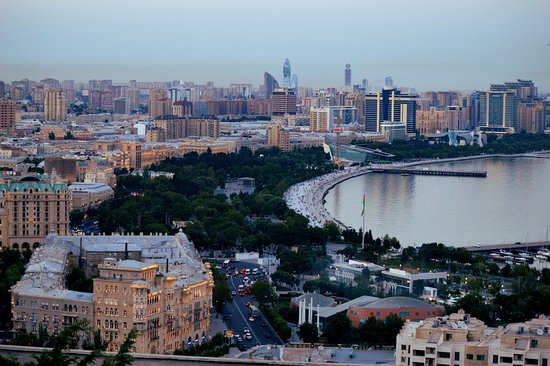
The population of the city is about 2 million people. Although Baku is separated from Absheron settlements from an administrative point of view (their number is 32), historically these settlements are connected with the capital both from a cultural, economic and spatial point of view. Therefore, the whole Absheron Peninsula together with the capital is called "Great Baku".
In Absheron and Baku, there are the main transport highways of the republic — the Heydar Aliyev International Airport, the big seaport in Baku bay (by the way, it is the largest port in the whole Caspian Sea), the railway station in Baku, and the highways connecting the capital of the republic with the regions.
The main pipelines for the transportation of oil and gas start here, from Absheron. Baku is the main point of the TRASECA (Europe-Caucasus-Asia) International Transport Corridor. As part of this project, Azerbaijan participates in the restoration of the historic Great Silk Road Route.
CLIMATE. The Absheron Peninsula is located 28 meters below the world ocean level. The climate of Baku and Absheron is mild-hot, semi-desert and steppe, characterized only by the winds characteristic of Absheron. The so-called "Khazri" north wind cools the air in summer, and in winter it cools excessively. The so-called" GILAVAR " south wind brings the heat in summer and modifies the cold in winter. In general, the climate of modern Baku has become quite mild due to the gardens and parks where Baku people grow with pleasure. At the beginning of the XX century, it was impossible to get to the streets of Baku by a strong wind and dust, and today Baku has turned into a city with a warm and comfortable lifestyle.
MINERALS. There are oil, gas, construction Stone (called "badamdash" limestone), salt, sand, and lime deposits in Absheron Peninsula. Masazir, Gala, Boyuk Shor, Khoja Hasan salt lakes in Absheron are very popular. Some of the oldest oil wells in the world are located in Absheron. People used to extract oil from these wells with verdures. Here are a few of the first wells produced by industrial oil.
Azerbaijan ranks first in the world for the number and diversity of mud volcanoes, which are considered a wonderful mystery of nature. Of the 800 known mud volcanoes existing in different countries of the world, 400 are located within the South Caspian oil and gas basin, including more than 300 onshore territories of Azerbaijan, in the Caspian Sea, and on numerous islands.
All different types of mud volcanoes existing in the world are represented in Azerbaijan. It is no exaggeration to call this land a natural reservoir and laboratory of mud volcanism. Therefore, in recent years, international scientific forms on the issues of volcanism, geodynamics, and seismicity are being held in Baku.
Mud volcanoes attract more and more attention from tourists coming to our country. The desert and rocky landscape of Absheron, its volcanoes remind us of the youth period of our planet. There were no people on earth at that time, nor the moon landscapes. But Azerbaijani volcanoes are alive, they breathe…
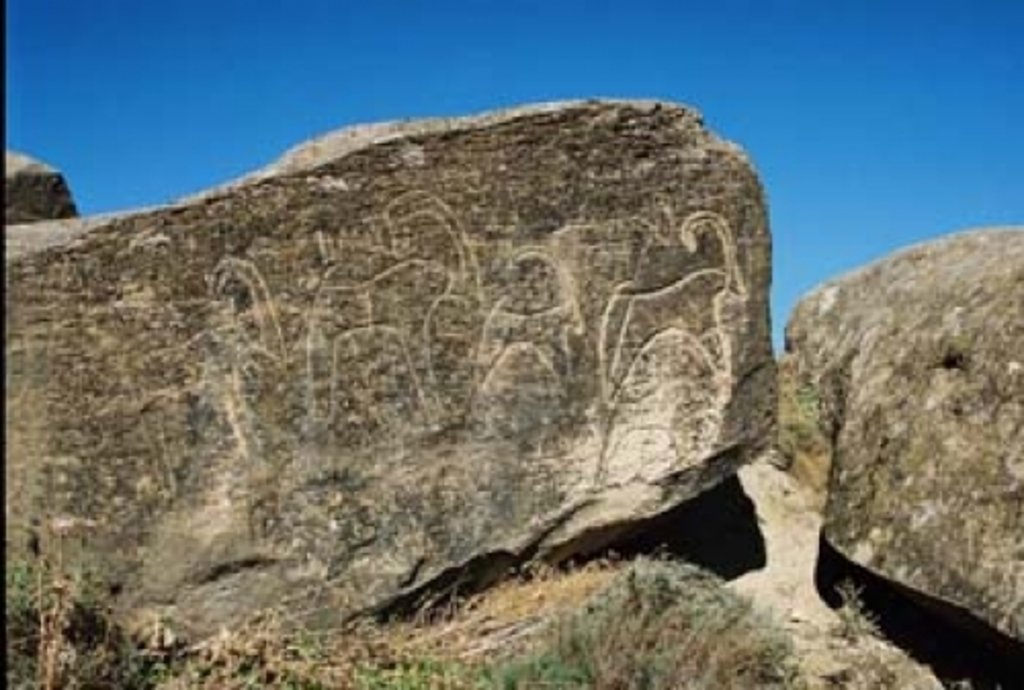
GOBUSTAN PETROGLYPHS IS AN OPEN-AIR MUSEUM. Petroglyphs, that is, rock paintings, are artistic "archives" of human evolution on Earth. The "documents" of such archives are similar to the first time a person broadcasts his own self to the surrounding world. There are several such "archives" in the open air in Azerbaijan. One of them, probably the largest, is located in Gobustan — the Baku State Historical-ethnographic and artistic Reserve near Baku. Located in the south-eastern foothills of the Greater Caucasus Mountains, this rocky Massif is located near the Caspian Sea on the modern highway, built along the ancient Shirvan road. Numerous rock drawings, ancient human settlements under the rocks, and burial mounds were discovered here. Two archaeologists, who devoted 35 years of his life to the study of Gobustan — D.Rustamov and his wife F.Muradova believes that the most ancient part of Gobustan petroglyphs is a very informative picture of life, despite the simplicity of the most optimistic and self-expression of man in the early period of human development. They studied about 20 rocks in six settlements, excavated about 40 mounds, discovered 300 new rocks and stones with drawings on them. However, the rocks of Gobustan are not only witnesses of the most ancient period of human life. These rocks reflect 15 thousand years of the life of the region — a great time period from the Upper Paleolithic to the Middle Ages.
In 1939, archaeologist Isaac Jafarzadeh, the first researcher of Gobustan, informed world science about these unique places.
Today, more than 4000 petroglyphs (rock drawings made on the basis of stone carving technique) have been found in Gobustan. These paintings include animal and fishing, domestic scenes, collective dances, various, including sun symbol (swastika, spirals, cross), constellations, men and women (interestingly, women went hunting with men at that time), images of animals such as gazelle, mountain goat, lion, goat, the boat made of cane, two-wheeled cart, and Human Traces. Unusual "dishes"-hollows printed on stone and even decorated with patterns remained intact in Gobustan. There are also unusual "musical instruments" — stones that give powerful sounds. Because each stone has its own timbre, they are called "tambourine stones".
There are signs confirming the presence of Roman legionnaires in the I century of our era in Gobustan rocks. This region, which is attractive to be occupied, has not spread from the attention of the Romans. A Latin text was written by the Roman centurions of the 11th lightning Legion on one of the rocks here. This article indicates that at that time Emperor Domitsian Caesar Augustus was in Germanic power in Rome. In 2007, Gobustan was included in the UNESCO "World Heritage" List.

HISTORY OF ABSHERON. Due to the geographical climate and geological factors of Absheron, the entire Absheron Peninsula and the territory of Baku were inhabited 20,000 years ago. (Ancient human settlements were discovered near Yeni Surakhani settlement.). In general, the ancient human settlements on the entire peninsula do not account for the burial mounds of the Bronze Age and the early Iron Age. There are also ancient burial complexes with anthropomorphic figures shaved from stone, on which plot drawings are applied (the villages of Dubendi, Turkan, Hashahuna, Mardakan, Shuvelan). You will not find such complexes in any other region of Azerbaijan and the Caucasus. Ancient human settlements have been discovered on Pirallahi Island, on Lake Zyg, in Binagadi and Amirjan(before the III-I millennium BC). All this shows that the Absheron Peninsula as a whole has attracted people for their peaceful life since ancient times. However, the geostrategic position of this peninsula attracted various invaders.
The largest settlement in Absheron is MASHTAGHA village. In addition to the remains of human settlements belonging to the Bronze Age and Iron Age, there are also monuments related to the later period: flea ARBUTAY mosque (1414), Khoja Aydemir mosque, GAZIKHANA, Khoja Karbalai Huseyn mosque (XVIII century), a mosque built in XIII-XIV centuries and later added 40 m high minaret, bathhouse belonging to XVII century, OVDAN (sututar, XIX century); tombs of AGIL BABA, Khoja ASLAN, HASANBEK, Khoja Aydemir (XVIII century).
In "Gala" Baku State Historical and ethnographic reserve located in Absheron village, ancient mosques, roads, ovdans, ancient graves (XV century), baths, human settlements of the Bronze Age are preserved. Gala settlement, which is very peculiar in Absheron, is sometimes called "Old City" in Absheron.
The temple of fire worshippers in Baku — Ateshgah (firehouse) is of great interest to the guests of the capital. ATESHGAH (XVII century) in SURAKHANI settlement is located on the rock. Here, for millennia, gas, which has naturally emerged from the Earth, has been burned. A very interesting natural phenomenon can be observed near the village of MAMMADLI: natural gases emanating from the ground are constantly burning here at the foot of the rock. Therefore, this place is called "Yanardag". In ancient times, there were many such places in Absheron.
Very ancient “tracks” were discovered in Absheron. Many of these spots, which are a complete analog of mysterious "roads" on the island of Malta, lie directly inside the sea and disappear there…
Baku. This city was one of the first seaports built on the Caspian coast since ancient times. Using one of the ancient sea routes — Astrakhan along the Volga, from there by sea to Baku, boats of the invaders and peaceful trade caravans from Russia and European countries came to Baku. Merchants and travelers continued on their way to the southwest, passing through the territory of Georgia to the countries on the Black Sea coast, east, Iran, China, and India. If Azerbaijan is a country located on the conditional border of Europe and Asia, Baku and Absheron can be considered one of the main gates of this country. Residents of European countries had to go through this gate to get to know Asia better. Residents of Asia and the Far East, eager for Europe, did not bypass Baku either. A branch of the Great Silk Road passed from here.
Some written sources information about the city BARUKA in ancient Caucasian Albania. According to scientists, this name belongs to Baku. In various written sources of the ancient period, ancient names of Baku City such as Bagavan, Ateshi Bagavan, Bakukh, Bakuya, Bad-Kuba, Baku, and Baka can be found.
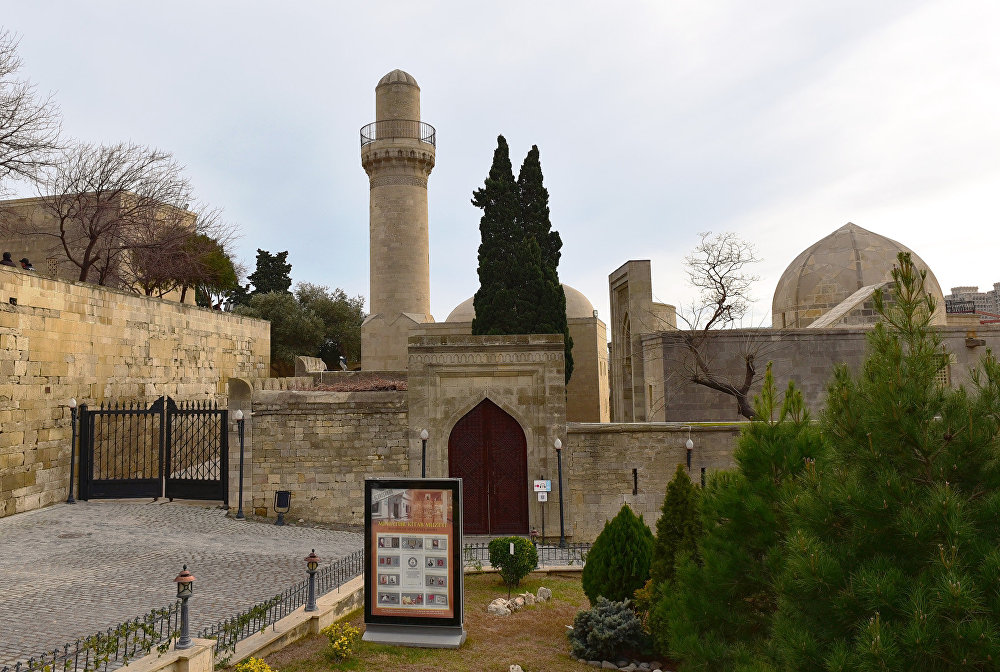
The reward of seeing people truly fulfilled by their sense of purpose. As a result of a strong earthquake in the XII century, Shamakhi suffered serious damage and Shirvanshah I Akhsitan, whose wife and children died, moved the capital of Shirvan state to Baku. Thus, Baku became one of the main cities of Shirvan. Shirvanshah erected the fortress walls of Icheri Sheher in his new capital and dug trenches in these walls. The people of the city were engaged in crafts, prepared carpets, copper and bronze dishes, and weapons. Many of these samples of folk art are now kept in museums of different countries of the world. Baku became a strategic port in the Caspian Sea, which created favorable conditions for its further progress.
The Shirvanshahs created a powerful fleet in the Caspian Sea. During the reign of shirvanshah I Khalilullah (1417-1462) a lot of construction work was carried out in Baku, the economy and culture strengthened. In 1501, Shah Ismail Safavi conquered Baku. During the reign of Shah TAHMASIB (1538) the state of Shirvanshahs became part of the Safavids state. After the disintegration of this state in the XVII century, the independent Baku Khanate was established here.
At that time, the Russian Empire's geopolitical interest in the Caucasus was very strong. In this regard, Baku was of particular importance. The Russian Tsar Peter I marched to the Caspian Sea. In 1723, he sent an expedition to the Caspian Sea, and in the same year, Peter's troops captured the entire Caspian region, including Baku, Shamakhi, Shirvan, Derbent, and the Caspian cities of Iran. The wars between Russia and Iran ended with the conclusion of the GULUSTAN peace treaty in 1813. According to this agreement, Azerbaijan was divided into two parts: the northern part was taken by Russia and the southern part by Iran.
MONUMENTS OF BAKU. The most interesting among historical monuments in Baku is the old Icheri Sheher, surrounded on three sides by a great fortress wall. The palace of the Shirvanshahs and its complex of various buildings (mausoleum, saray mosque, divankhana, Palace bath, mausoleum of the palace scientist Seyid Yahya Bakuvi (dervish turbine)) are located here. The palace of the Shirvanshahs was built by Shirvanshah I Khalilullah (in 1417-1462) and his son Farrukh Yasser (1962-1501). Among the ancient monuments in ICHERISHEHER, the Juma Mosque is also of interest. There is a text written by SULTAN OLJAYTUN (XIII century) in the building of this mosque. The streets of ICHERISHEHER are very narrow. Sometimes the passage between the houses is so narrow that when a person opens his hands, he grabs the whole street. In numerous small shops, there are carpets, ceramic products, copper dishes, and other ancient and modern products, which are handmade by folk craftsmen. it is possible to buy things. You can get acquainted with the national cuisine of Azerbaijan in the restaurants of the ancient Caravanserai building in Icheri Sheher.
The city looks like an amphitheater located on the slopes of rocky hills of Baku from the top of it - Highland Park or from the side of the sea. It reminds me of a goby on the Seacoast. On the outskirts of Icheri Sheher near the great Baku Boulevard, one of the most important historical-architectural monuments of our country, the Maiden Tower, which has become the symbol of Baku, is erected.
The Maiden Tower is dated to the XII century. According to scientists, this fortress was for military and defense purposes and is part of a whole complex of the military—defense buildings starting from the northern borders of Azerbaijan — Derbent fortress. The complex of defense fortifications Gilgilchay began from the sea. Many fortresses have been erected along this barrier which ends with a big tower in the Chiraggala mountains.
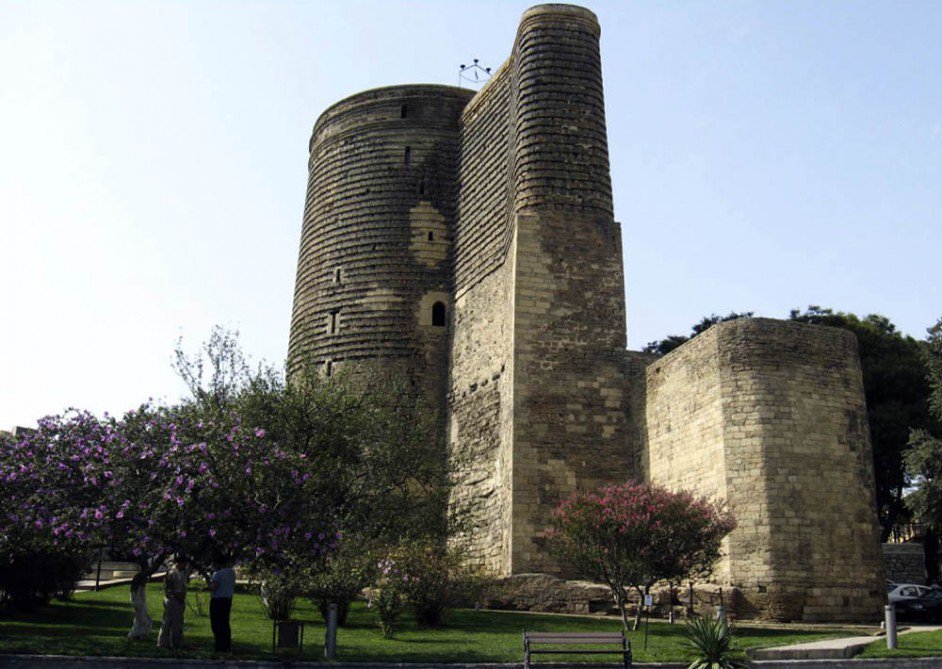
However, scientists have not yet been able to reveal all the secrets of the Maiden Tower. For example, there are facts about the construction of this fortress earlier. Many bakuvians consider the Maiden Tower, a unique example of the history and architecture of our country, very important not only from a religious, defense, and scientific (astronomic) point of view but also from an esoteric point of view. Therefore, there are many legends about the Maiden Tower and its name in the City folklore. Since 2000 it has been included in the UNESCO "World Heritage" List.
Today Baku is a modern city with the unique beauty of the East and features of a modern megalopolis. Baku, the capital of Azerbaijan, has several museums: the Museum of Azerbaijani history, The Museum of Literature, The Museum of musical culture, The Carpet Museum, The Theater Museum, as well as the Museum of the founder of modern Azerbaijani music Uzeyir HAJIBEYOV, the famous Azerbaijani composer Niyazi, the composer and jazz performer Vagif MUSTAFAZADE, memorial museums of world-famous musician Mstislav Rostropovich born in Baku, writer and playwrights Huseyn Javid, Jafar JABBARLI, Mammad Said ORDUBADI, and others, unique miniature book museum are functioning.
Of course, the new symbol of modern Baku is the Heydar Aliyev Center. It is a beautiful building, surrounded on four sides by various facades. The adjacent territory is neatly decorated, there are fountains, stairs, and escalators. This is a famous work of Iraqi-British architect Zaha Hadid.
The small town" Little Venice " is one of the beautiful places of the seaside National Park in Baku. This small town, reminiscent of Venice of Italy, adorns the capital of Azerbaijan with its beautiful appearance. In the 60s of the XX century, "Little Venice" was established on Baku Boulevard and became a favorite place for recreation of Baku citizens and guests of the city.
Seaside Boulevard is a charming corner of Baku, one of the favorite places for recreation of residents and guests of Baku City. In 2009, The Boulevard celebrated its 100th anniversary. If before the reconstruction the length of the boulevard was 16 kilometers, then after the reconstruction it became 25 kilometers. In March 2014, a new 60-meter-high observation wheel was opened in the new tabloid section of Primorsky National Park. Inspired by the "sails" of the Sydney Opera House on the boulevard, there are attractions such as the Park Bulvar Mall and the Caspian W. At the end of the boulevard there is the National Flag Square (World Flag Square) with the flag and the flagpole. A little away from the flag there is a sports and concert complex "Crystal Hall", designed for the "Eurovision-2012" song contest.
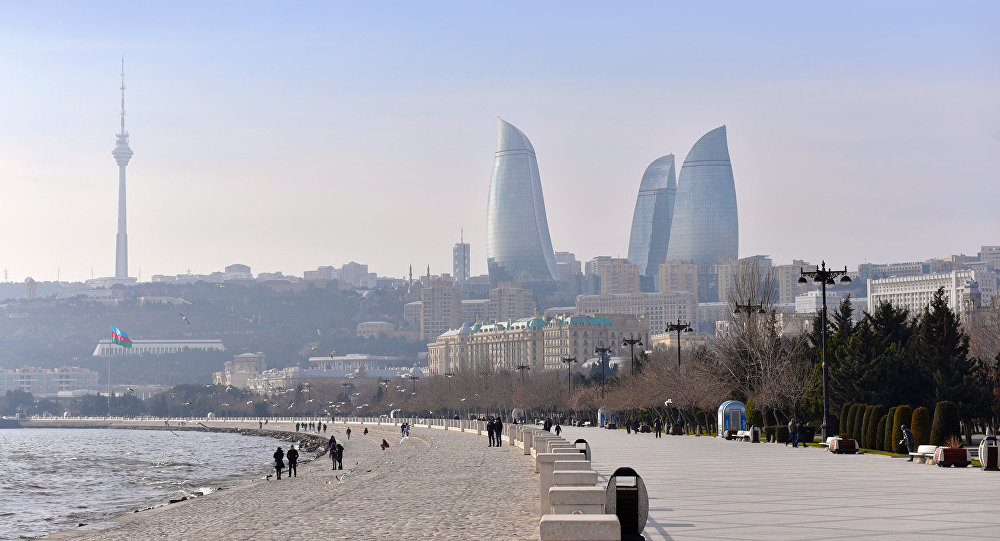
Since carpet weaving is the oldest art in Azerbaijan, it is not surprising that the world's first specialized museum for Carpet collection, preservation, and study was created in Azerbaijan.
The ultramodern architectural complex, which forms the new symbol of the capital of Azerbaijan, suits the overall look of the city. Its name is self-explanatory Flame Towers, that is, "flame" or "glowing" towers are three giant buildings resembling fiery tongues. It is not necessary to go out to the side to see them, because these towers are visible everywhere.
There are numerous exhibition and concert halls, art galleries, theaters, sports complexes, stadiums, swimming pools, hotels, and restaurants in the capital.
There are many beaches in Baku's circuit along the entire perimeter of the Absheron Peninsula. In 5 months of the year, you can sunbathe and bathe on the beaches of Absheron. There are many sunny and hot days here. In summer, when the heat decreases, discos and nightclubs begin to work on the beaches after sunset. Here, numerous hotels, rest houses, and sanatoriums on the Caspian Sea coast offer their services to tourists and holidaymakers.



